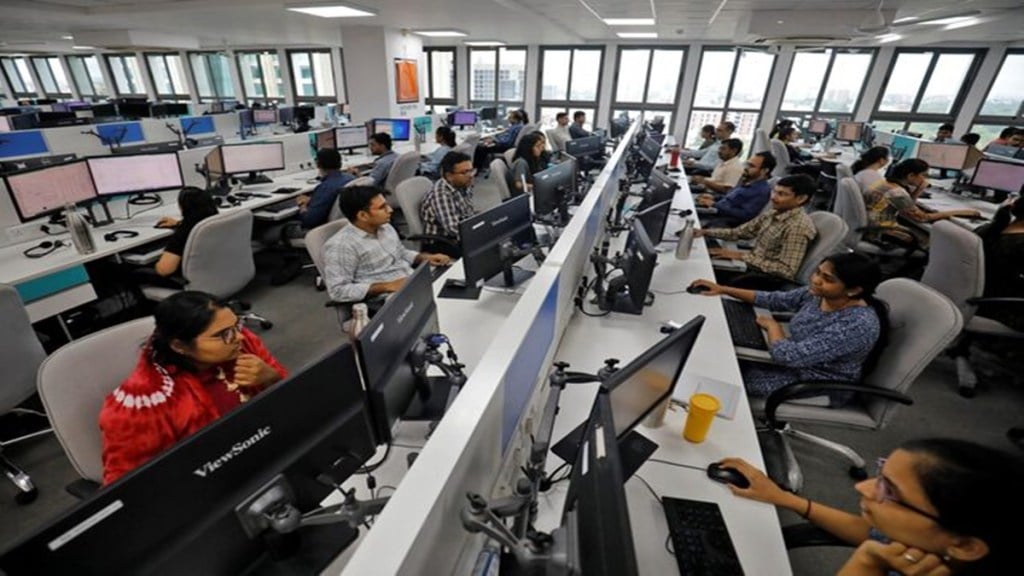By Ali Mehdi
The death of two young female workers at leading companies — 26-year-old Anna Sebastian Perayil of EY and Sadaf Fatima, 45, of HDFC Bank — has once again brought the issue of workplace stress and toxicity to the fore. Perayil and Fatima joined more than a million people in India’s working-age population who die every year due to cardiovascular diseases (CVDs). Many die before their 50th birthday. India has been the world’s largest contributor to CVD deaths in the 15-49 age group since 1997 (Global Burden of Disease/GBD).
Hypertension was the leading cause of cardiovascular morbidity and mortality in India in 2021. Air pollution was the second leading cause as far as cardiovascular morbidity is concerned, and third for cardiovascular mortality. The third and second positions were held by dietary risks — low consumption of fruits and vegetables, whole grains, nuts and seeds, Omega-3 and -6, etc. as well as high consumption of sodium and trans fats (GBD).
According to 5th round of India’s National Family Health Survey (2019-2021), 24% of men and 21% of women aged 15 years or above had hypertension (on anti-hypertensive medicines/with a blood pressure of =140/90 — a high threshold, considered as stage 2 hypertension by the American Heart Association). The respective figures were 19% and 17% in the 4th round of the survey (2015-16). More worrisome is the fact that only 23% of those with hypertension had it under control.
Winters are near, and we will soon be faced with toxic levels of air pollution and a resultant rise in the burden of cardiovascular and other diseases. India accounted for 22% of global CVD deaths due to air pollution in 2021, with 35% of CVD deaths in the country attributable to air pollution (GBD). For India’s workforce, it will be a deadly cocktail of toxic weather and workplace.
As far as dietary risks are concerned, we need to bear in mind that food choices are quite complex, and a behavioural focus on healthy diets is not going to be enough. The World Health Organization (WHO)’s global strategy on diet, physical activity, and health (2004) highlights the “complex interactions between personal choices, social norms and economic and environmental factors”. An enabling environment is essential. “The more an environment consistently promotes healthy behaviour, the greater the likelihood that such behaviour will occur”.
So, what can employers do to create an enabling environment for workforce well-being? They should adopt health promotion as their primary strategy — enabling employees “to increase control over, and to improve, their health” (1986 Ottawa Charter for Health Promotion). Employees should, among other things, be involved in decisions that impact their work and well-being. This could help develop a sense of ownership and commitment in them, and engage them as partners in progress. An empowered employee is the agent, the subject, not an object, of his or her work and well-being.
Employers should also draw lessons from the United Nations’ 2030 Agenda for Sustainable Development, “a plan of action for people, planet and prosperity” that involves an “integrated”, “indivisible”, and “balanced” approach to the three dimensions of sustainable development — economic, environmental, and social. A sustainable path to prosperity does not threaten people or the planet. Employers should ensure that employees “can fulfil their potential in dignity and equality and in a healthy environment”. And they should “protect the planet from degradation, including through sustainable consumption and production, sustainably managing its natural resources” (2030 Agenda).
Human resources also need to be managed sustainably. They are capable of working wonders in an enabling environment. An exploitative approach to productivity becomes counterproductive. It undermines employees’ health (or even survival, as in the case of Perayil and Fatima), and ultimately their productivity.
An “integrated” and “indivisible” approach to workforce well-being is needed. Together with well-being programmes, employers should adopt a health-in-all policies approach. Workforce health needs to be a core consideration in all aspects — considerate of the various dimensions and determinants of health.
The WHO Constitution defines health as “a state of complete physical, mental and social well-being and not merely the absence of disease or infirmity”. WHO’s first director-general, Brock Chisholm, argued that the earlier definition of health (“sane mind in a sane body”) was “outmoded”, and we also have “responsibility for social health, for being able to live in peace and contributing to the welfare of other people” (quoted from his 1948 paper, “Organization for world health”). Social health can help tackle social isolation that has the potential to raise the risk of death by up to 91% — thanks to an impact comparable to smoking, and higher than health risks such as physical inactivity and obesity.
Social health could foster a positive work environment by inspiring empathy, and improve productivity, collaboration, innovation, and job satisfaction — and reduce toxicity, stress, and attrition levels. With workplaces being building blocks, social health can also help them make the wider world — torn by war and hatred — a peaceful place to live in.
Disclaimer: Views expressed are personal and do not reflect the official position or policy of FinancialExpress.com. Reproducing this content without permission is prohibited.

